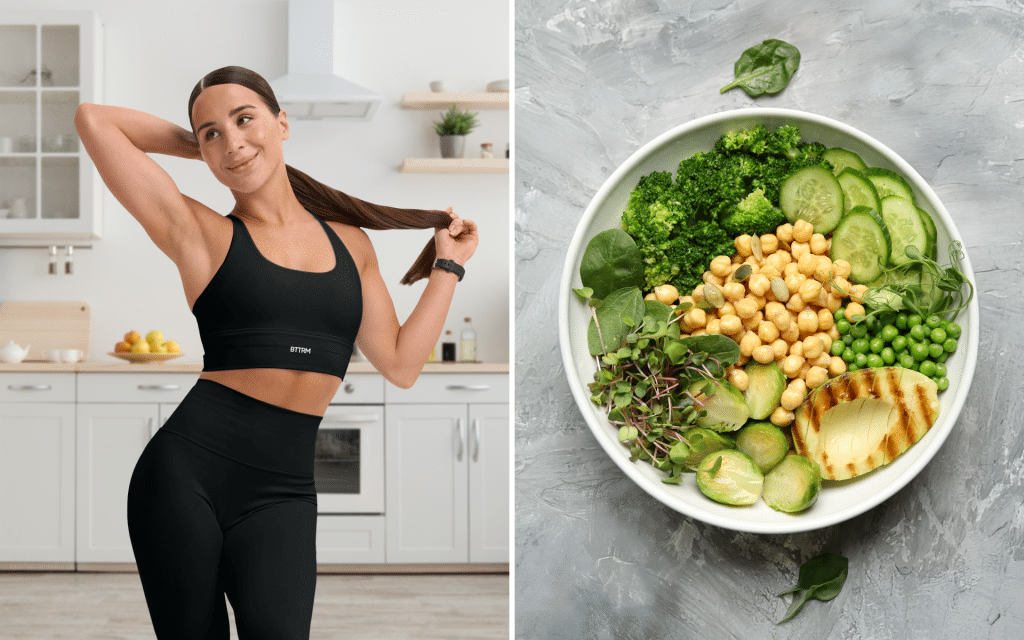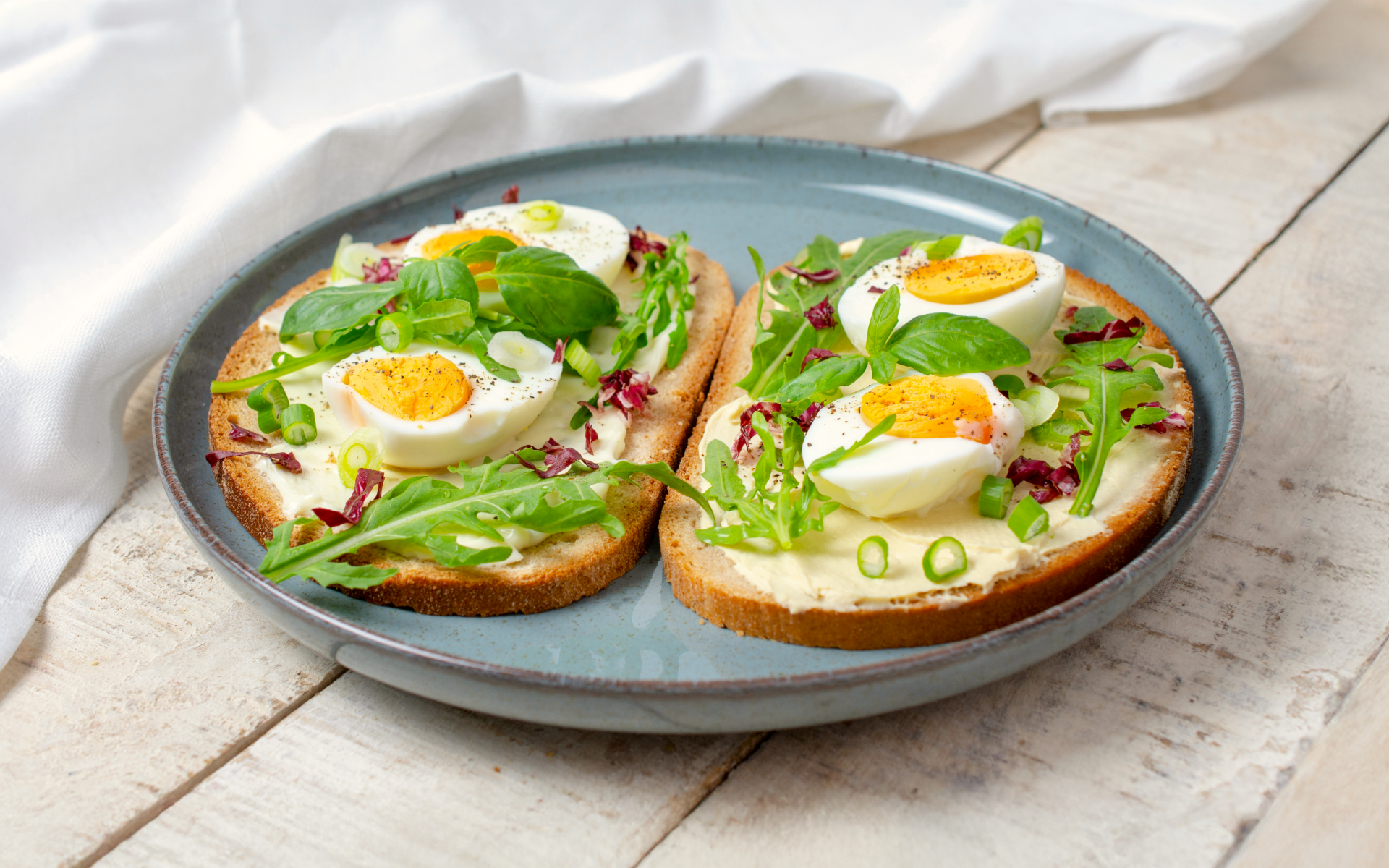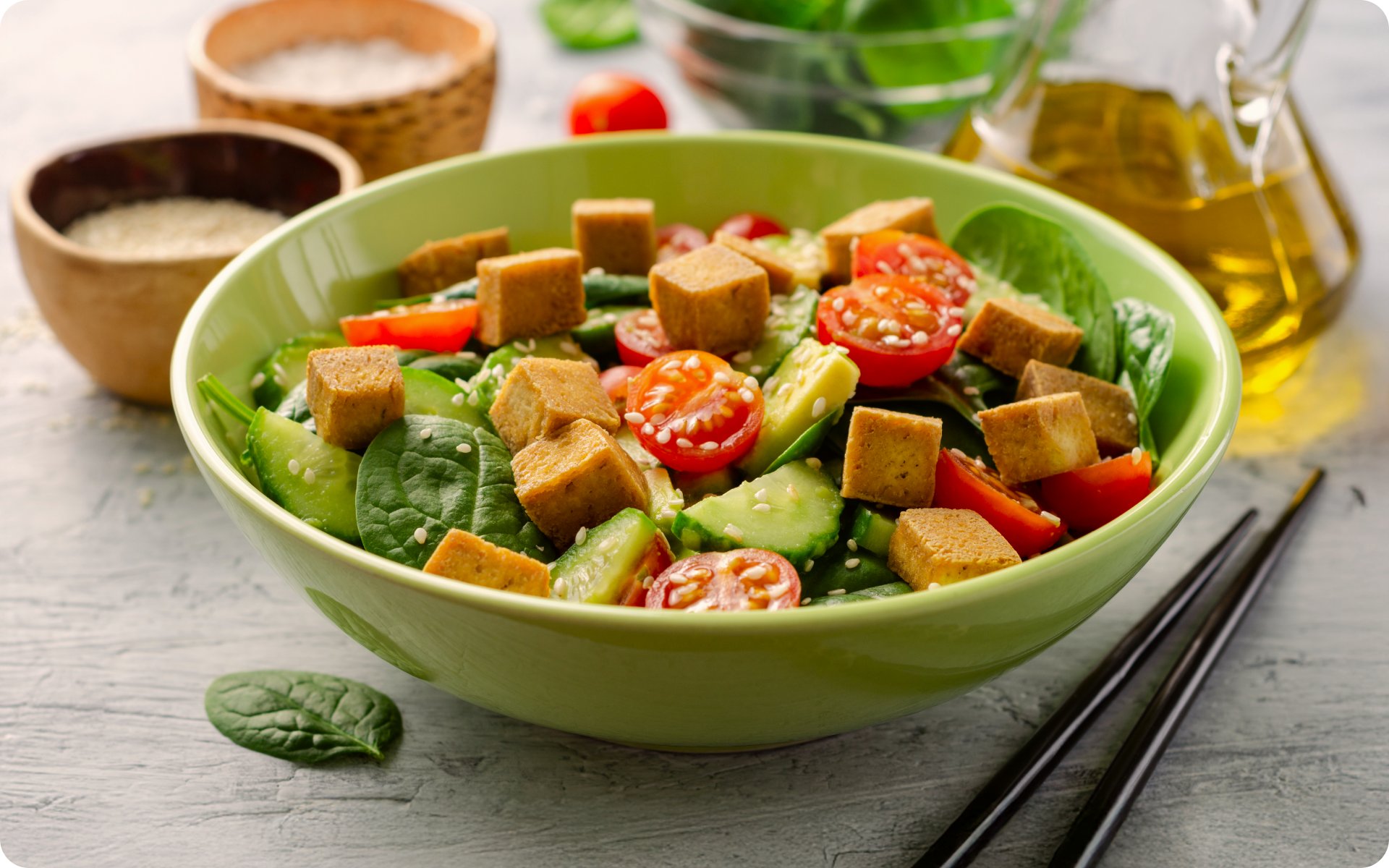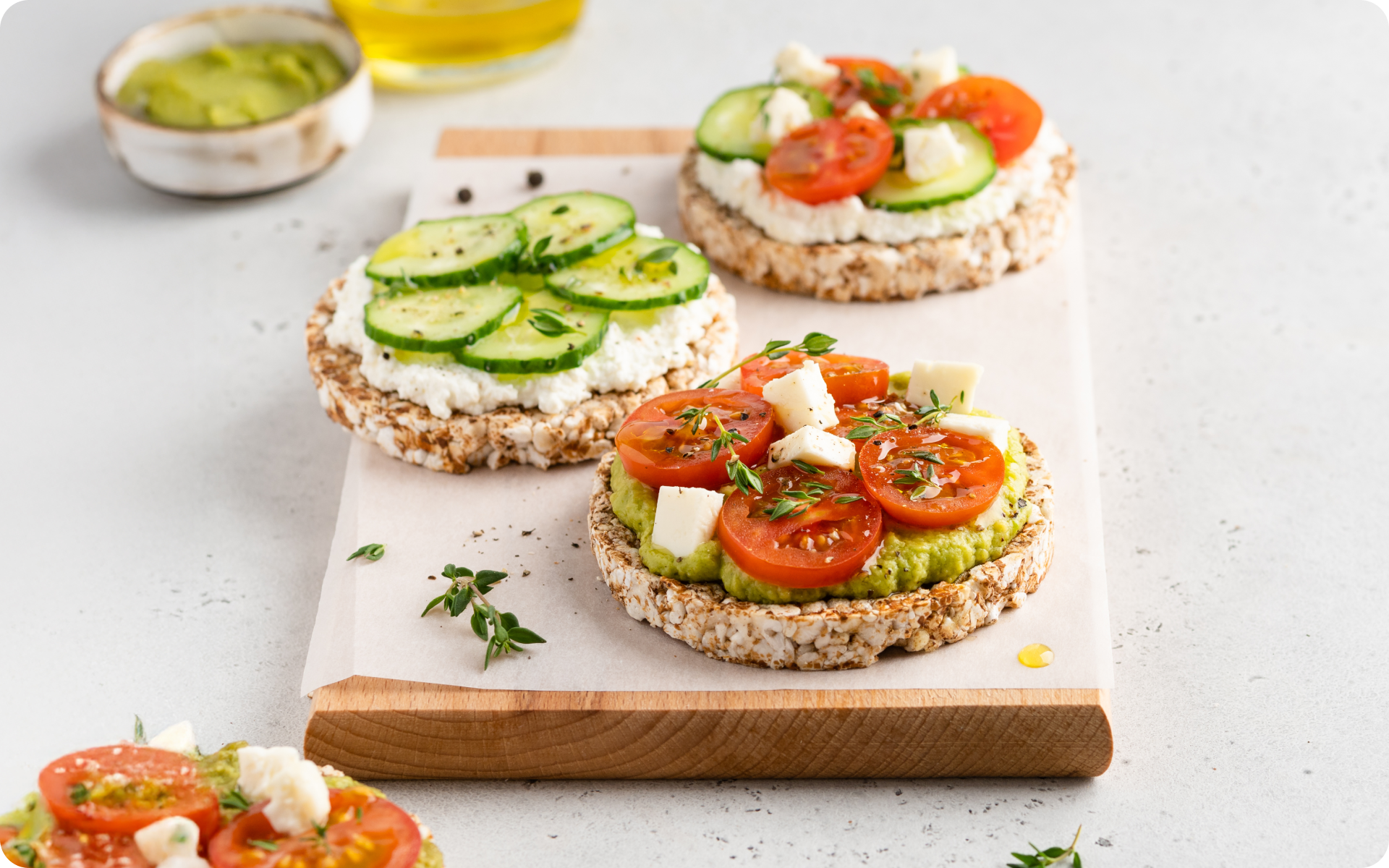An elimination diet is a way to figure out what foods may be triggering the health problems you often face. When you consume a variety of different foods in a day and end up experiencing issues such as gas, bloating, or skin rashes, you may wonder what triggers them. This is where your healthcare provider may recommend following an elimination diet. It’s a powerful tool to help pinpoint the root of medical conditions or health disorders.
Why?
Well, the gut is very important to your overall health and an extensive body of research has identified a connection between gut health and the heart, brain, and immune system (1). Your body’s ability to absorb nutrients that fuel the body can keep it functional and healthy. In contrast, you may start to experience symptoms if your gut health isn’t optimal (2). Sometimes certain foods act as triggers or exacerbate existing issues.
In this guide, we’ll take an in-depth look at how you may be asked to temporarily alter your diet if you’re facing health troubles. There are also some delicious elimination diet recipes, so this is a piece you shouldn’t miss if you’re experiencing food-related health symptoms.
What Are Some Elimination Diet Recipes?
Usually, healthcare providers use an elimination diet to identify foods that may be triggering food-related sensitivities, intolerances, and allergies. A large number of foods are usually eliminated from the diet for a set amount of time. Once the symptoms are resolved, the foods are gradually introduced one by one to assess any negative symptoms that are associated with them (3). All foods that don’t cause symptoms can be included in your diet going forward. The idea is to find the specific foods that trigger your symptoms and only avoid those in the future.
An elimination diet food list is typically followed for 2 to 4 weeks, but it may vary depending on your healthcare provider’s instructions. The foods or food groups you’re asked to eliminate in the beginning may also vary, but could include dairy, certain grains, certain sweeteners, legumes, soy, nuts, shellfish, eggs, and/or other common allergens. Here are some recipes you may be able to include in your elimination diet meal plan:
Breakfast
Sweet Potato Hash with Vegetables
Serves 2
Ingredients: Sweet potato, zucchini, bell pepper, spinach, olive oil, sea salt, and fresh herbs.
Instructions:
- Dice the sweet potato and sauté in olive oil until tender.
- Add the diced zucchini and bell peppers, cooking for 5-7 minutes.
- Toss in the fresh spinach and herbs, then cook until wilted. Serve warm.
Green Smoothie
Serves 1
Ingredients: Spinach, cucumber, green apple, banana, water, and flaxseed.
Instructions:
- Blend all the ingredients until smooth.
- Add ice for a refreshing twist.
Lunch
Quinoa and Roasted Vegetable Bowl
Serves 2
Ingredients: Quinoa, roasted sweet potato, zucchini, beets, olive oil, and tahini dressing – if you’ve been asked to eliminate sesame, you can substitute the tahini dressing with a vinaigrette.
Instructions:
- Cook the quinoa according to the package instructions.
- Roast the vegetables at 400°F (200°C) with olive oil until tender.
- Serve quinoa topped with the roasted vegetables and drizzle with tahini.
Chicken and Vegetable Soup
Serves 4
Ingredients: Chicken breast, carrots, celery, onion, zucchini, bone broth, and fresh parsley.
Instructions:
- Cook the diced chicken in a large pot until lightly browned.
- Add the chopped vegetables and broth and simmer until tender.
- Garnish with parsley and serve.
Dinner
Baked Salmon with Steamed Asparagus
Serves 2
Ingredients: Salmon fillet, asparagus, lemon, olive oil, and sea salt.
Instructions:
- Season the salmon with olive oil, sea salt, and lemon slices.
- Bake at 375°F (190°C) for 15-20 minutes.
- Steam the asparagus and serve alongside the salmon.
Turkey Lettuce Wraps
Serves 3
Ingredients: Ground turkey, romaine lettuce leaves, zucchini, carrots, coconut aminos, and garlic.
Instructions:
- Sauté the ground turkey with garlic and diced zucchini/carrots.
- Add coconut aminos for flavor.
- Spoon the mixture into lettuce leaves and serve.
If you wish to free yourself from all the extra pounds that have been weighing you down for way too long, start using the BetterMe: Health Coaching app and overhaul your entire life!
Snacks
Coconut Yogurt with Berries
Serves 1
Ingredients: Unsweetened coconut yogurt, fresh berries, and chia seeds.
Instructions:
- Top coconut yogurt with berries and chia seeds. Enjoy chilled.
Vegetable Sticks with Guacamole
Serves 2
Ingredients: Cucumber, carrot, celery sticks, avocado, lime, and sea salt.
Instructions:
- Mash the avocado with lime juice and sea salt to make guacamole.
- Serve with vegetable sticks.
In these recipes, we’ve mapped out some easy meals and snacks you can distribute throughout the day. We left out some of the top foods that are primarily associated with food intolerances, including milk, nuts, peanuts, fish, wheat, soy, and shellfish.
Food elimination diets come in various forms. This plan removes foods with some of the most common allergens. However, you may need to eliminate a different set of foods depending on what your healthcare team is looking for.
Read more: Ancient Greek Diet: How Did the Ancient Greeks Eat and Was it Healthy?
What Can You Eat on a Full Elimination Diet?
Elimination diets are restrictive. However, there are some foods you can safely consume. The following are some things you can most likely have on your elimination diet food list without any worries:
- Vegetables: This group is a good source of minerals and vitamins. You can eat almost all vegetables, but on some elimination diets, the nightshades are excluded.
- Fruits: Most fruits can be eaten on this diet, although citrus fruits are sometimes excluded. They keep you satiated, provide your body with essential nutrients, and prevent malnutrition.
- Fish and meat: You can get enough protein on the elimination diet by eating poultry such as turkey and chicken, lamb, wild game, and fatty fish such as salmon (as long as your doctor doesn’t suspect a fish allergy). It’s best to choose lean cuts of meat for better heart health.
- Grains: Rice, buckwheat, and quinoa are gluten-free. You can eat these grains on most elimination diets.
- Dairy alternatives: If you’re trying an elimination diet that requires you to avoid dairy, you can opt for milk alternatives such as coconut or unsweetened rice milk. These are dairy-free.
- Beverages: Drink water and herbal teas without caffeine or sweeteners. This will keep you hydrated without any off-limits ingredients.
- Fats: Include healthy fats such as olive oil, avocado oil, or canola oil. You can use them for cooking proteins or vegetables.
You can add herbs and spices to your meals to keep your foods flavorful. Although you may end up quitting many of your favorite foods on an elimination diet, you can still enjoy eating if you get creative and look for new recipes. Fortunately, you’ll only be on an elimination diet for a short time.
What Snacks Can I Eat on an Elimination Diet?
Snacking mindfully can ensure you’re not going off-limit and eat permissible foods. Here are some simple snack ideas that should work for many elimination diets:
Fruits and Vegetables
- Fresh fruit (apples, pears, bananas, or berries)
- Raw or steamed vegetables (carrots, cucumbers, bell peppers)
- Applesauce (unsweetened)
Protein Snacks
- Plain grilled or baked chicken or turkey strips
- Hard-boiled eggs (if allowed)
- Unsweetened nut or seed butter (such as almond or sunflower seed butter, if permitted) with apple slices
When it comes to weight loss, progress is made by inches, not miles, so it’s much harder to track and a lot easier to give up. The BetterMe: Health Coaching app is your personal trainer, nutritionist, and support system all in one. Start using our app to stay on track and hold yourself accountable!
Healthy Fats
- Avocado slices or guacamole
- Coconut yogurt (without additives)
- Chia pudding (made with coconut or nut milk)
Crunchy Snacks
- Rice cakes (plain)
- Baked sweet potato chips
- Roasted chickpeas (if legumes are permitted)
Homemade Treats
- Smoothies with allowed fruits and dairy-free milk
- Homemade energy balls (made with seeds and natural sweeteners such as dates)
- Coconut or oat-based granola (without allergens and gluten-free if necessary)
One way to stay motivated during an elimination diet is to try out new recipe ideas. You can experiment with herbs and spices to enhance the flavor of your snacks.
After the elimination phase, the next phase is reintroduction. Add one food at a time back into your diet to see if it causes any problems. Wait at least three days before trying another food so you can tell which one is causing symptoms. Keeping a food diary can help – write down what you eat, any symptoms you notice, and when they happen.
What to Avoid on an Elimination Diet
Some foods can be a common trigger for health troubles. Here are 7 foods you should avoid on common types of elimination diets:
- Dairy: Milk, cheese, yogurt, and butter
- Gluten: Wheat, barley, rye, bread, and pasta
- Soy: Tofu, soy milk, soy sauce, and edamame
- Eggs: Both whites and yolks
- Nuts: Peanuts, almonds, walnuts, and cashews
- Processed foods: Packaged snacks, fast food, and artificial additives
- Sugar and artificial sweeteners: Sugar alcohols, high-fructose corn syrup, and aspartame
An elimination diet helps determine which foods cause sensitivities. There are different ways to do it, and you’ll be guided by your healthcare team regarding the food groups you need to eliminate. In the above recipes, we avoid seven of the most common allergens, but if you expand it to the 9 most common, you’d also avoid fish and sesame. If you think that dairy is the problem, you should swap it for non-dairy options and adjust the plan to suit your needs. If your doctor suspects you have a gluten sensitivity, you may start by eliminating certain grain-based products.
There are some additional elimination diet approaches, including:
- Low-FODMAPs Diet
FODMAPs are short-chain carbohydrates which may be poorly absorbed in the small intestine in some people, which can lead to increased fermentation by gut bacteria and potential issues such as gas and bloating. They are found in many fruits, vegetables, pulses, grains, and sweeteners. Restricting these foods can reduce these symptoms and help identify the specific foods that trigger an individual’s symptoms.
Research and studies suggest that a low-FODMAP diet can work effectively as an elimination diet for people with irritable bowel syndrome (IBS) (4). It can bring significant improvements in symptoms such as bloating, abdominal pain, and diarrhea.
- Few Foods Elimination Process
This is a program where you eliminate all but a small number of foods, and then reintroduce them one by one to identify sensitivities. It should only be done short-term and under the guidance of a healthcare team, including a registered dietitian.
- Fasting-based Elimination Diet
This diet involves drinking only water for five days. Instead of removing and adding certain foods, this diet means following a fasting period where you drink water. It’s important to only initiate this diet after getting permission from your doctor as it could be dangerous.
The length of your elimination diet may depend on how your body reacts. It takes time to remove trigger foods and symptoms may not go away immediately. Elimination diets can help some people, but they may not solve all health issues. Food may not be the main cause of your symptoms. Talking to your doctor or a registered dietitian is important to ensure you have professionals helping you.
Read more: The Navy Diet Explained: Benefits, Risks, And Results
How Long Should an Elimination Diet Last?
An elimination diet should last for 2-4 weeks. It may help people with food intolerances, sensitive gut, and food allergies identify their specific triggers. An ideal elimination diet should be short-term as it can cause nutritional deficiencies if prolonged. When reintroducing foods, introduce them at the pace your doctor or dietitian recommends to see if there are any reactions.
Elimination diets are hard but short-term, and they can have benefits in terms of symptom relief. All it asks for is some planning, preparation, and mindful food consumption to ensure you make the most from it.
A “top 8 elimination diet” means removing the eight most common food allergens: milk, eggs, wheat (gluten), soy, peanuts, tree nuts, fish, and shellfish. These foods are the most likely to cause allergies or sensitivities in many people. Yes, rice is generally okay to eat on an elimination diet. In fact, rice is a grain that’s often included in elimination diets. No, you should avoid coffee on an elimination diet. Caffeine is usually removed as part of the process. Yes, you can eat bananas on most elimination diets if you do so in moderation. They are high in fructose and other FODMAPs, so they may be restricted on a low-FODMAP diet.Frequently Asked Questions
What is the top 8 elimination diet?
Is rice okay on an elimination diet?
Can I have coffee on an elimination diet?
Can you eat bananas on an elimination diet?
The Bottom Line
Due to the complexity of elimination diets, it’s important to work with a registered dietitian throughout the process. They can help you spot the symptoms and food groups that trigger your symptoms. They can also help you create an easy elimination diet meal plan to make things easier for you.
Restrictive eating patterns may not be ideal for some individuals, particularly children and the elderly. These people can work with their healthcare providers to find alternative methods to identify these food triggers or opt for medications to keep their symptoms controlled.
DISCLAIMER:
This article is intended for general informational purposes only and does not serve to address individual circumstances. It is not a substitute for professional advice or help and should not be relied on for making any kind of decision-making. Any action taken as a direct or indirect result of the information in this article is entirely at your own risk and is your sole responsibility.
BetterMe, its content staff, and its medical advisors accept no responsibility for inaccuracies, errors, misstatements, inconsistencies, or omissions and specifically disclaim any liability, loss or risk, personal, professional or otherwise, which may be incurred as a consequence, directly or indirectly, of the use and/or application of any content.
You should always seek the advice of your physician or other qualified health provider with any questions you may have regarding a medical condition or your specific situation. Never disregard professional medical advice or delay seeking it because of BetterMe content. If you suspect or think you may have a medical emergency, call your doctor.
SOURCES:
- Gut microbiota nexus: Exploring the interactions with the brain, heart, lungs, and skin axes and their effects on health (2024, sciencedirect.com)
- GUT HEALTH Understanding It and Treating Digestive Disorders (n.d., hopkinsmedicine.org)
- Food Allergy and Intolerance: A Narrative Review on Nutritional Concerns (2021, pmc.ncbi.nlm.nih.gov)
- Efficacy of the low FODMAP diet for treating irritable bowel syndrome: the evidence to date (2016, pmc.ncbi.nlm.nih.gov)











